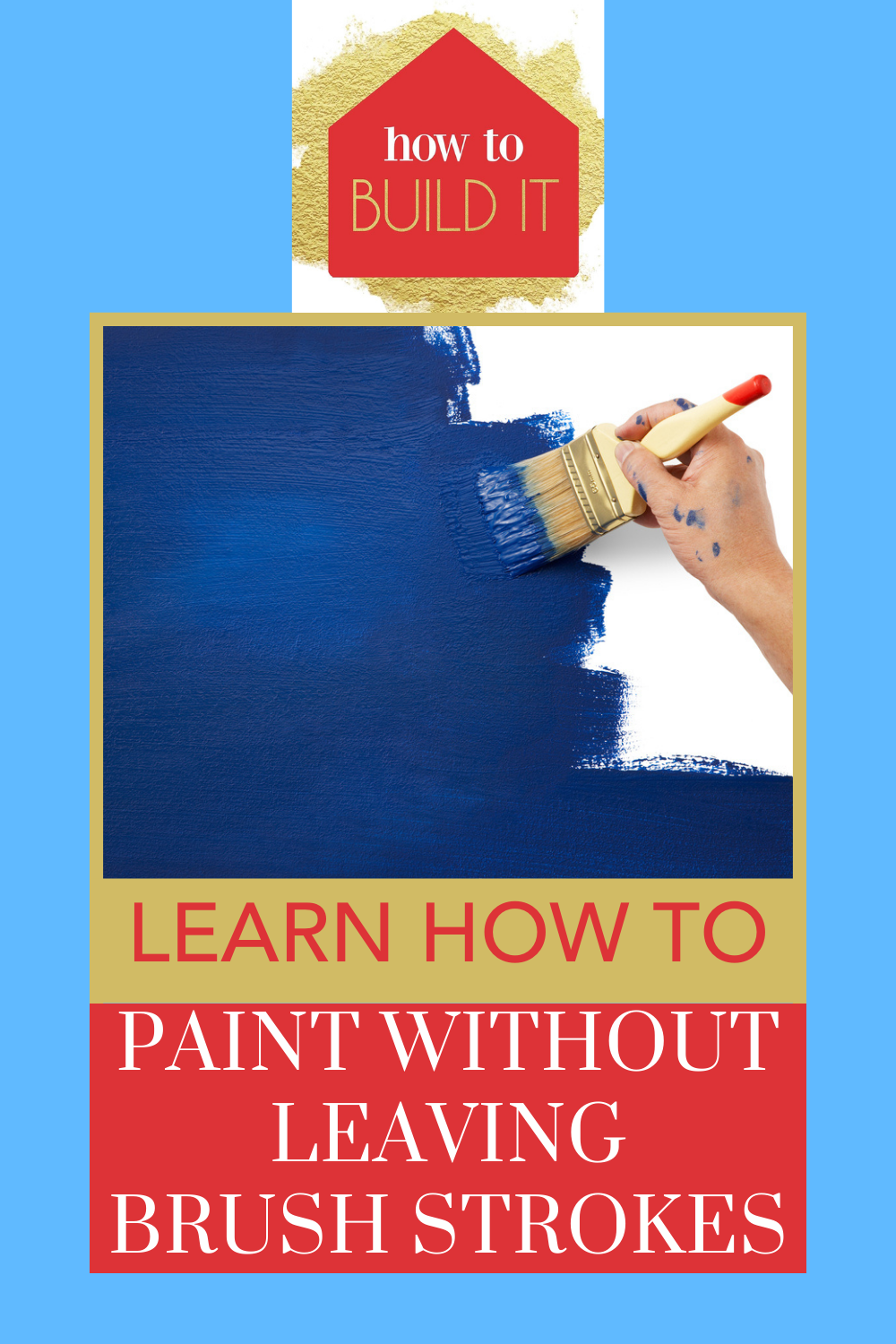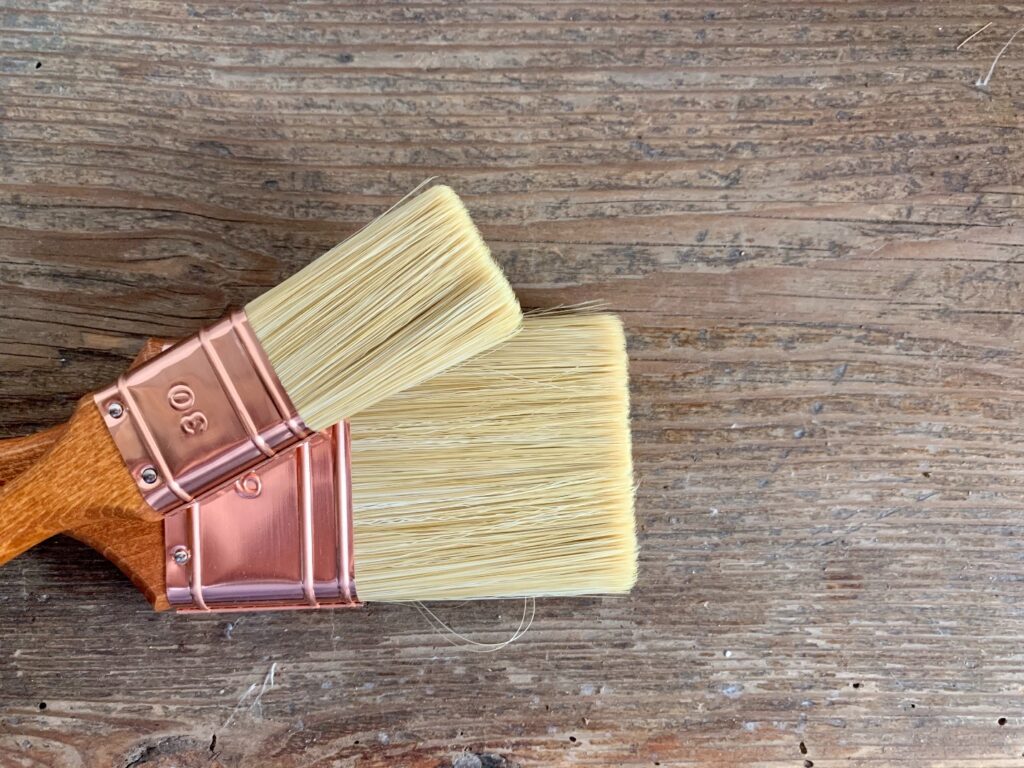How often have you painted your furniture or any piece around your house only to find visible brush strokes when the paint dries? If you’re here reading this post, we can assume that the answer to that question is quite often. It’s not only frustrating to have all your time and effort go to waste, but it also has a notable impact on the appearance and aesthetics of the piece you just painted. You can’t just let it be. If aesthetics are of major concern for you, you’ve got to address the problem right away. You may want to know the answer to the question of how to paint without leaving brush strokes before you take up the next furniture painting project.


Painting is an art, and it’s not everyone’s cup of tea. A professional furniture painter can do the job best. However, there are plenty of people out there who prefer to do the job themselves. This blog is just what you need before setting out to paint your next piece of furniture if you’re one of the latter categories.
We won’t say that it’s an easy job. However, it’s not impossible to achieve the final paint look without any brush strokes. You just have to do all the things right.
Continue reading ahead if you want to know how to paint without leaving brush strokes to achieve a flawless paint coat.
How to Paint without Leaving Brush Strokes – Tips and Tricks


This guide consists of some of the most promising tips to achieve a flawless paint coat that has no visible brush strokes. Let’s dive into it right away.
Choose the Right Paintbrush


Not all paintbrushes are the same. You’ll be amazed to see the variety of paintbrushes when you visit a hardware store. From a massive range of sizes and styles, there’s so much about paintbrushes that you may not know. And this is exactly why you are unable to achieve a flawless finish.
You can’t paint without leaving brush strokes if you don’t have the right paintbrush. So, the first step is to get your hands on the right paintbrush.
However, choosing the right paintbrush isn’t straightforward. It’ll depend on the type of paint that you’re planning to use.
- A brush with synthetic bristles is suitable when you’re using milk paint. You can choose a flat or an angled brush, but the bristles have to be made of synthetic material.
- If you’re planning to use chalk-type or fusion-mineral paint, we would suggest you use a rounded paintbrush.
Point to remember: You’ll never get a smooth, stroke-free finish if you’re using old brushes that have dried and stiffened.
Figure Out the Right Painting Technique
You read that right. There’s a technique to paint. You can’t just use up-and-down or sideways strokes and expect to achieve a stroke-free finish. You need to figure out the right painting technique.
There’s a right and wrong way to hold a paintbrush. Hold the brush between your fingers and thumbs, more or less like you hold a pencil. Grabbing the paintbrush in your fist is not the right way of holding a paintbrush.
Moreover, don’t hold the paintbrush straight up (at a 90 degrees angle) against the piece you’re painting. Hold it at an angle (slightly tilted). Paint in gentle strokes. Hard and rough strokes are bound to leave behind brush strokes on the surface.
Pro tip: Dip the tip of your paintbrush into the water before dipping it into the paint. Strokes will feel a lot gentler when the brush is slightly moist.
Paint in the Right Direction
The key to achieving a flawless finish is to paint in the right direction. If you want to know how to paint without leaving brush strokes when you’re painting a wooden surface, make sure you’re painting in the direction of the wood grain.
Try to keep the direction of strokes the same if you’re painting a surface other than wood, where there’s no clear indication of the direction that you should be painting in.
Sand the Surface after Each Coat


Use sandpaper with a fine grit to sand the surface of the painted piece after each coat dries completely. Although it may not sound very logical to you right now, it’ll help you achieve the fine finish that you want. Sanding will remove any uneven paint off the surface and give your paint a smooth and flat finish.
There will be no grittiness. Therefore, please don’t skip this step, no matter how unnecessary it sounds to you right now.
Combine Roller and Brush


One way to achieve a stroke-free, flawless finish of the paint is to use a combination of a roller and paintbrush. First, use a roller to apply the first coat of your paint. You’ll get a super-fine coat of paint when you use a roller.
Quickly run your paintbrush in smooth and gentle strokes along the length of the piece you’re painting immediately after you apply a coat with a roller. It’ll smooth out any lines or strokes from the roller and give you the flawless finish that you so desire.
When you’re finding an answer to the question of how to paint without leaving brush strokes, always remember that you are no professional. No matter how closely you follow the tips and tricks listed above, there may be some visible brush strokes. Don’t beat yourself too hard.
The paint that you use for DIY projects isn’t the same as what professional furniture painters use. While following the tricks listed above will give you a super fine finish, give yourself some space if you still see brush strokes.
Our guide on how to paint without leaving brush strokes is a way to help beginners and DIY-ers pull off their projects smoothly!
